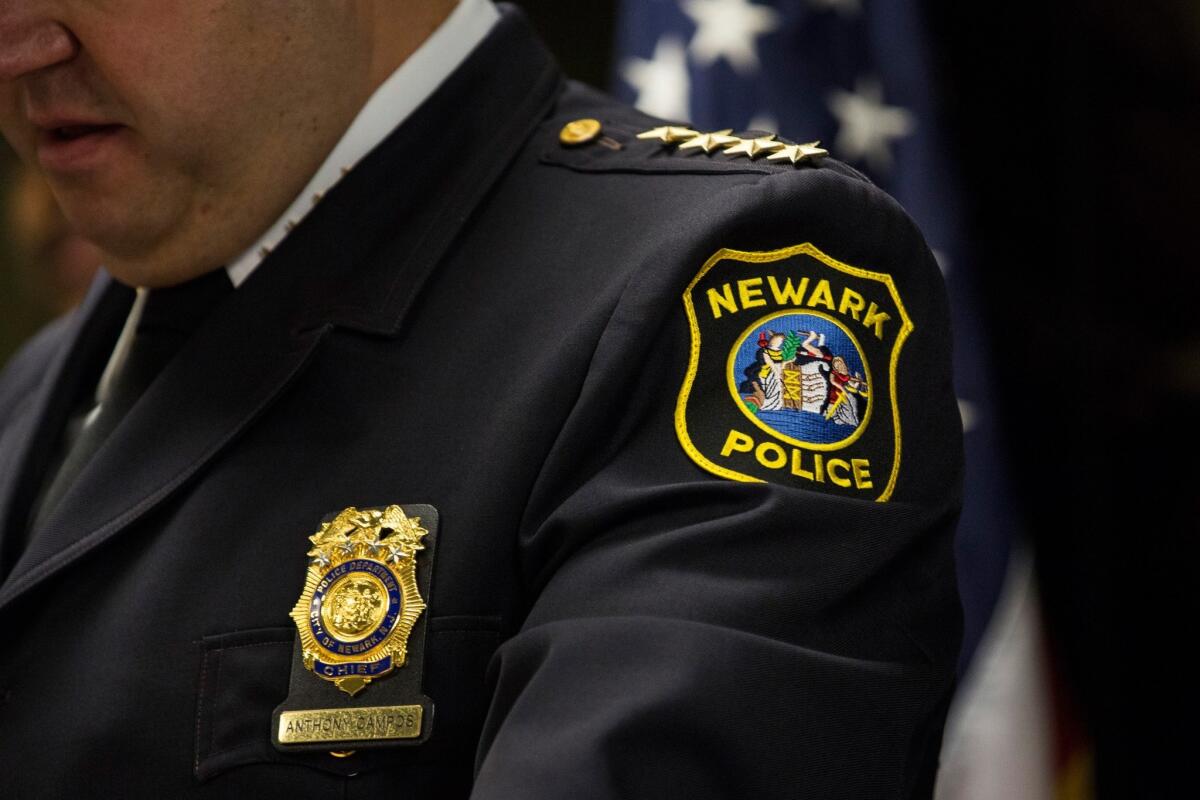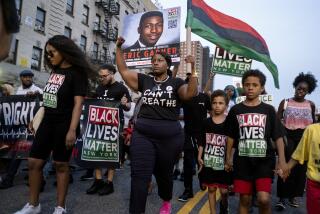Ferguson report’s racist details: More of the same, but still shocking

In Seattle, two officers held back the arms of a woman while a third squirted pepper spray in her face and punched her in the ribs. In East Haven, Conn., Latinos were twice as likely to be given traffic citations as whites. In Newark, N.J., blacks accounted for 80% of pedestrians stopped by police.
And now there is Ferguson, Mo., a St. Louis suburb whose Police Department came under fire in a federal report portraying it as an unruly institution whose officers have used dogs, guns, batons and the power of their badges to intimidate African Americans.
Is Ferguson worse than other U.S. police departments that have been under scrutiny for racial profiling and excessive force?
The Justice Department report released this week found many of the same problems already identified in more than two dozen police departments since 1997. The report, however, appears to find Ferguson police responsible for a much broader range of violations than many of the others.
Other federal reviews have focused on racial discrimination, as in East Haven, or excessive use of force, as in Seattle, both in 2011. The report on Ferguson includes those allegations and more, notably the accusation that police seemed as focused on generating revenue as fighting crime, and that they did this by citing African Americans for often questionable violations.
In one case, a black man sitting in his parked car in summer 2012 was cited for code violations for not wearing a seat belt and for giving police a false name: Mike instead of Michael.
“I haven’t seen that before,” said Samuel Walker, an expert on police accountability and professor emeritus at the University of Nebraska in Omaha. “It’s really a devastating report, because they’ve got interviews and quotes to back it up.”
Walker, who has studied every Justice Department report on police departments issued since the first one in 1997 and who this week testified before the President’s Task Force on 21st Century Policing, said that with Ferguson, he also was struck by the report’s detailing of racist emails shared among Police Department employees, using city computers.
“They’re truly offensive,” he said of the emails, which included jokes about President Obama and First Lady Michelle Obama. “Again, this is use of city computers, and nobody says, ‘Hey, stop this.’”
The allegations taken as a whole pack a powerful punch, especially coming on the eve of the 50th anniversary of the Selma, Ala., march that ended in bloodshed for blacks demanding equal rights.
“What’s shocking is that this report is taking place in 2015. This sounds like 1955,” Marc Morial, head of the Urban League, said on CNN after the report’s release. It came seven months after the shooting death in Ferguson of Michael Brown, an 18-year-old black man, by white Officer Darren Wilson sparked violent protests and demands for a federal investigation.
In addition to the emails, the ticketing of blacks for minor code violations, and the jailing of those who fell behind in paying off tickets, the report notes that blacks, who make up 67% of Ferguson’s population, accounted for 85% of motorists stopped and 93% of people arrested.
Nearly 90% of documented force used by Ferguson police was against blacks, and in every police dog bite incident for which racial information was available, the person bitten was black.
Lorie Fridell, an associate professor of criminology at the University of South Florida and the former director of research at the Police Executive Research Forum, said it was important not to rely too heavily on such percentages to reach conclusions on racial bias.
Disparity does not always mean discrimination, she said, noting that other factors need to be considered, such as local driving habits, neighborhood crime rates and the number of nonresidents who pass through a jurisdiction on any given day.
“There are no perfect or foolproof methods for determining whether police departments are inappropriately using race to make law enforcement decisions,” Fridell said. “It’s easy to measure disparity. It’s very difficult to parse out the causes of that disparity.”
In fact, the Justice Department’s 2014 report on the Newark Police Department did not conclude that there was overt racism in the department, despite the overwhelming percentage of African Americans ticketed and arrested relative to the city’s population.
“This investigation did not determine whether this disparity reflects intentional race discrimination,” the Newark report said, even as it noted that the African American population had been disproportionately affected by policing habits.
The Ferguson report, by comparison, makes no bones about racism being one of the driving forces of the Police Department.
“We have found substantial evidence of racial bias among police and court staff in Ferguson,” it said, citing in particular the emails that equated blacks with criminals and joked about an abortion by a black woman being a means of crime control.
Many black leaders and civil rights experts said the allegations of racism were not surprising given the recent history of racial bias in police departments nationwide, from Los Angeles in the 1990s until now.
“These things are kind of formulaic,” Scott Greenwood, a Cincinnati-based civil rights attorney, said of the Ferguson report. Greenwood has worked with police departments, including Cincinnati’s, to oversee reforms mandated by Justice Department officials, and said many of the Ferguson allegations mirrored those seen in Cincinnati, and more recently in Albuquerque, where he worked with police to institute reforms.
But Ferguson is unusual because of its small size compared with most police departments that come under scrutiny, Greenwood said. There are 53 officers on the force, which allowed it to operate under the radar while bigger cities’ departments faced questions over their handling of issues such as controversial policy of stop-and-frisk.
“Too frequently it takes a catastrophic event before anybody pays attention to the underlying challenges,” said Greenwood, referring to the Brown shooting, which led to an eruption of anger by African Americans who said they had complained for years of mistreatment by police.
The challenge now, experts say, is getting Ferguson’s leaders to make the changes necessary to restore trust in the police.
Ferguson’s mayor, James Knowles III, said one of the Police Department employees who sent racist emails had been fired, but he refused to say whether Police Chief Thomas Jackson would keep his job.
Greenwood noted that it took years before change took effect in Los Angeles, where there was initial resistance to reforms recommended after a Justice Department report in the 1990s. “But that department went from one that was widely perceived to be acting with a lot of racial bias into one that is now one of the better departments,” he said.
Greenwood said it would behoove leaders to embrace reforms, including simply having police tell people why they are being stopped instead of detaining them without explanation.
If Ferguson’s leaders resist reforms, he predicted the city and Justice Department would enter into a consent decree, which would put the Police Department under federal oversight. Such decrees can last several years or longer. The Los Angeles consent decree was in force for 12 years. A judge lifted it in 2013.
Whatever route Ferguson takes, Fridell said, the report should be viewed as progress, even though it made clear that race-based abuse is alive and well in policing. Every new report illuminating such abuses should be a learning experience for chiefs and sheriffs elsewhere, she said.
“But we should not expect these to disappear,” Fridell warned. “There are approximately 18,000 police departments, so we’d expect many of them to take advantage of these lessons, and others would not. But personally, I think it’s a good sign the Department of Justice is finding additional departments that need reforms.”
tina.susman@latimes.com
Twitter: @TinaSusman
More to Read
Start your day right
Sign up for Essential California for news, features and recommendations from the L.A. Times and beyond in your inbox six days a week.
You may occasionally receive promotional content from the Los Angeles Times.







